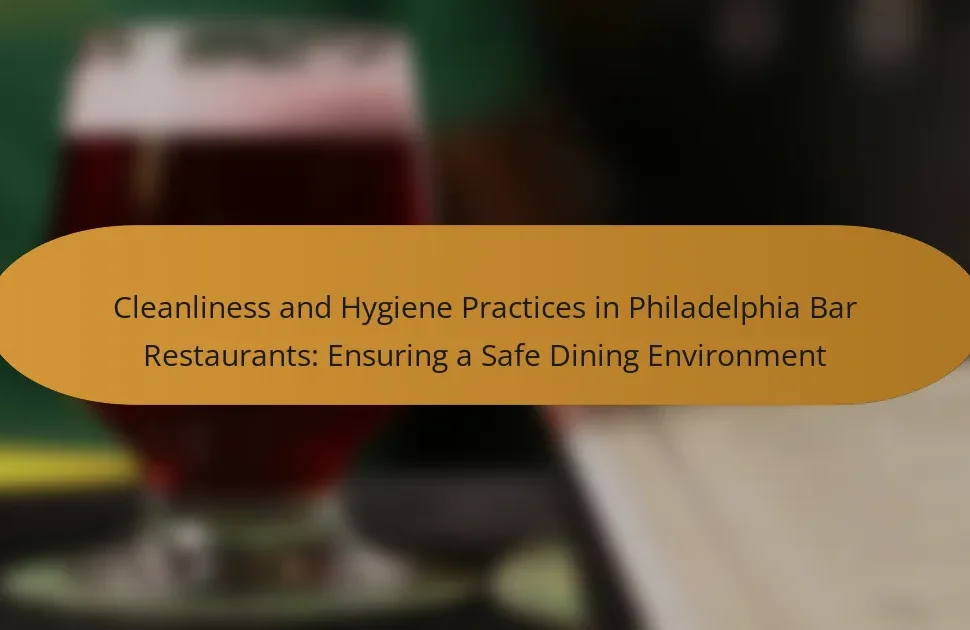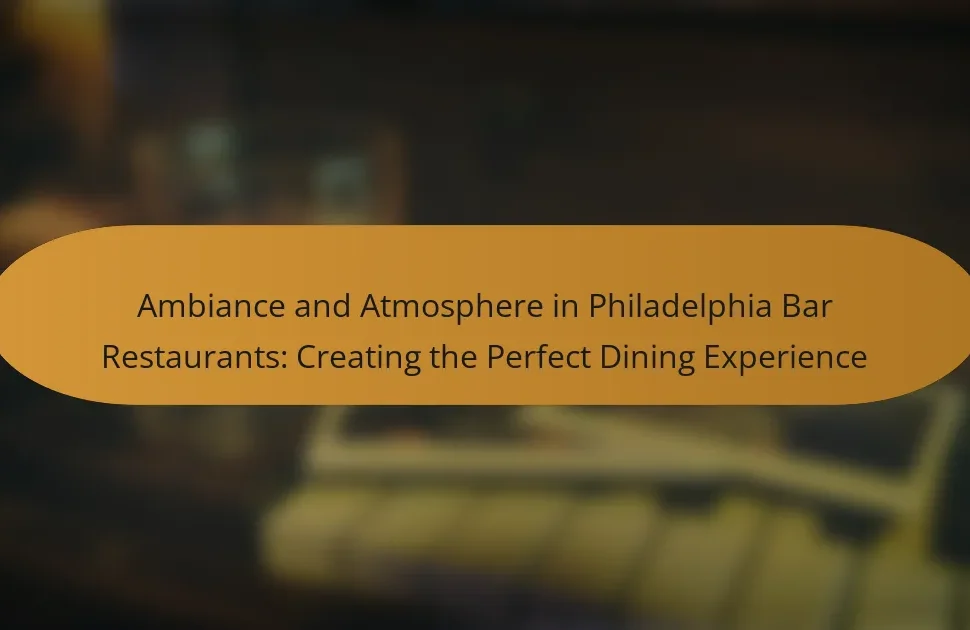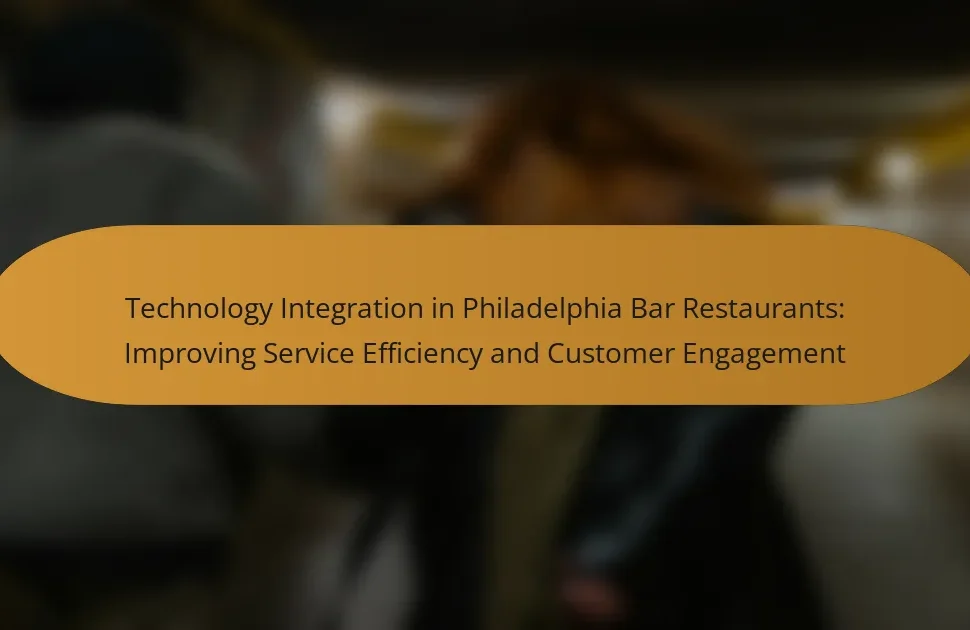
What are Feedback Mechanisms in Philadelphia Bar Restaurants?
Feedback mechanisms in Philadelphia bar restaurants are systems used to collect customer opinions and experiences. These mechanisms include comment cards, online surveys, and direct communication with staff. They help restaurant owners understand customer satisfaction and identify areas for improvement. For instance, a study by the National Restaurant Association indicates that 70% of diners are influenced by feedback when choosing a restaurant. Implementing these mechanisms can lead to enhanced service quality and increased customer loyalty.
How do feedback mechanisms contribute to service quality in bar restaurants?
Feedback mechanisms enhance service quality in bar restaurants by providing actionable insights. They allow patrons to express their experiences and preferences. This information helps management identify areas for improvement. Regularly collected feedback can reveal trends in customer satisfaction. For instance, a 2020 study found that 70% of customers prefer establishments that actively seek their opinions. Implementing changes based on feedback can lead to higher customer retention rates. Additionally, feedback fosters a culture of continuous improvement among staff. Ultimately, effective feedback mechanisms create a more tailored and enjoyable dining experience for guests.
What types of feedback mechanisms are commonly used in Philadelphia bar restaurants?
Philadelphia bar restaurants commonly use surveys, comment cards, online reviews, and social media interactions as feedback mechanisms. Surveys are often distributed to patrons after dining, collecting quantitative and qualitative data. Comment cards provide immediate feedback opportunities for customers to express their thoughts on service and food. Online reviews on platforms like Yelp and Google are crucial for gathering public sentiment and insights. Social media interactions allow establishments to engage with customers directly. These mechanisms help bar restaurants in Philadelphia understand customer preferences and improve service quality.
How do these mechanisms gather insights from customers?
Feedback mechanisms in Philadelphia bar restaurants gather insights from customers through various methods. Surveys and questionnaires are commonly used to collect customer opinions. These tools can be administered digitally or in person. Social media platforms also serve as channels for gathering feedback. Customers often share their experiences and suggestions online. Additionally, comment cards placed on tables encourage immediate feedback. Staff interactions also play a crucial role in obtaining insights. Employees can relay customer comments and preferences to management. These mechanisms collectively enhance service quality by identifying areas for improvement.
Why is customer feedback important for bar restaurants in Philadelphia?
Customer feedback is crucial for bar restaurants in Philadelphia as it directly influences service quality and customer satisfaction. It helps identify areas for improvement in menu offerings, ambiance, and service efficiency. According to a study by the National Restaurant Association, 70% of customers are more likely to return to a restaurant that actively seeks their feedback. This feedback can lead to increased customer loyalty, which is essential in Philadelphia’s competitive dining scene. Additionally, bar restaurants can adapt to local preferences and trends by analyzing customer input, ensuring they remain relevant and appealing to their target audience.
What impact does customer feedback have on operational improvements?
Customer feedback significantly influences operational improvements. It provides direct insights into customer experiences and expectations. Restaurants can identify areas needing enhancement through this feedback. For instance, specific complaints about service speed can lead to staff training initiatives. Additionally, positive feedback can highlight effective practices worth maintaining. Research shows that businesses leveraging customer feedback see a 10% increase in customer satisfaction ratings. This correlation suggests that operational changes based on feedback can yield measurable benefits. Consequently, integrating customer feedback into operational strategies is essential for continuous improvement.
How can feedback influence menu changes and service adjustments?
Feedback directly influences menu changes and service adjustments by providing insights into customer preferences and experiences. Restaurants collect feedback through surveys, comment cards, and online reviews. This data helps identify popular dishes and areas needing improvement. For example, if a dish receives consistent negative feedback, it may be removed or reformulated. Positive feedback can lead to menu expansion or highlighting certain items. Service adjustments can also be made based on feedback regarding staff performance and customer interactions. Implementing changes based on this feedback can enhance customer satisfaction and loyalty, ultimately driving sales and improving overall service quality.
What challenges do Philadelphia bar restaurants face in implementing feedback mechanisms?
Philadelphia bar restaurants face several challenges in implementing feedback mechanisms. One major challenge is the diverse clientele, which makes it difficult to gather representative feedback. Many patrons may not feel comfortable providing honest opinions in a busy social setting. Additionally, time constraints during peak hours can limit staff’s ability to engage customers for feedback.
Technology adoption is another hurdle. Some bar restaurants may lack the necessary tools or software to collect and analyze feedback effectively. Moreover, staff training is essential but often overlooked. Without proper training, employees may not know how to solicit or handle feedback appropriately.
Finally, there is the challenge of acting on the feedback received. Many establishments struggle to implement changes based on customer insights, leading to frustration among patrons who expect improvements. These factors collectively hinder the effective implementation of feedback mechanisms in Philadelphia bar restaurants.
How do bar restaurants overcome barriers to effective feedback collection?
Bar restaurants overcome barriers to effective feedback collection by implementing various strategies. They utilize digital platforms such as mobile apps and websites for ease of access. This approach encourages customers to provide feedback in real-time. Additionally, they train staff to actively solicit feedback during service. Staff engagement can significantly increase response rates. Bar restaurants also offer incentives, like discounts or free items, to motivate customers to share their experiences. Research indicates that 70% of customers are more likely to provide feedback when incentivized. They simplify feedback forms to ensure quick and easy completion. By addressing barriers such as time constraints and complexity, they enhance the likelihood of receiving valuable insights.
What role does staff training play in utilizing customer feedback?
Staff training is essential for effectively utilizing customer feedback. It equips employees with the skills to analyze and interpret feedback accurately. Trained staff can identify trends and areas for improvement based on customer insights. They are better prepared to implement changes that enhance service quality. According to a study by the American Society for Training and Development, organizations with effective training programs see a 218% higher income per employee. This underscores the financial benefits of investing in staff training for feedback utilization.
How can Philadelphia bar restaurants enhance their feedback mechanisms?
Philadelphia bar restaurants can enhance their feedback mechanisms by implementing digital surveys. These surveys can be distributed via email or through social media platforms. They allow customers to provide immediate feedback after their visit. Additionally, using QR codes on receipts can facilitate easy access to feedback forms.
Incorporating comment cards on tables encourages patrons to share their thoughts while dining. Staff training on soliciting feedback during service can also improve response rates. Engaging with customers on social media and responding to reviews builds a feedback loop.
According to a study by the National Restaurant Association, 70% of customers prefer providing feedback digitally. This statistic highlights the effectiveness of online feedback tools. Implementing these strategies can lead to improved service quality and customer satisfaction.
What best practices should be followed for effective feedback solicitation?
Effective feedback solicitation involves clear communication, timing, and accessibility. First, ensure that feedback requests are specific. This clarity helps respondents understand what is being asked. Second, choose the right moment to ask for feedback. Timing can significantly influence the quality of responses. Third, make it easy for customers to provide feedback. Use simple forms or direct conversations. Fourth, follow up on feedback received. This shows customers that their input is valued. Finally, analyze the feedback systematically. Regular analysis helps identify trends and areas for improvement. These practices enhance the overall feedback process in Philadelphia bar restaurants, leading to improved service quality.
How can technology improve the feedback collection process?
Technology can improve the feedback collection process by enabling real-time data capture and analysis. Digital platforms allow customers to provide feedback instantly via mobile apps or websites. This immediacy increases response rates compared to traditional methods. Automation tools can categorize and analyze feedback efficiently. For instance, sentiment analysis software can identify trends in customer opinions. Additionally, technology can personalize feedback requests based on customer behavior. This targeted approach enhances the relevance of collected data. Research indicates that businesses using digital feedback tools see a 30% increase in actionable insights. Overall, technology streamlines the feedback process, making it faster and more effective.
What are the key takeaways for improving service quality through feedback mechanisms?
Key takeaways for improving service quality through feedback mechanisms include actively soliciting customer feedback. This can be achieved through surveys, comment cards, or digital platforms. Regularly analyzing feedback helps identify areas needing improvement. Implementing changes based on feedback demonstrates responsiveness to customer needs. Training staff based on feedback insights enhances service delivery. Closing the feedback loop by communicating changes to customers fosters trust and loyalty. Utilizing feedback data to measure service quality trends supports continuous improvement. Establishing a culture that values feedback encourages ongoing customer engagement.
What actionable strategies can bar restaurants implement based on customer feedback?
Bar restaurants can implement several actionable strategies based on customer feedback. First, they should regularly collect feedback through surveys and comment cards. This allows customers to express their opinions directly. Second, they can analyze feedback to identify common themes and issues. Addressing frequently mentioned problems can significantly improve customer satisfaction.
Third, bar restaurants should engage with customers on social media. Responding to comments and messages shows that they value customer input. Fourth, they can hold staff training sessions based on feedback trends. This ensures that employees are equipped to meet customer expectations.
Fifth, they should consider menu adjustments based on feedback about food and drink preferences. Offering popular items can enhance the dining experience. Lastly, bar restaurants can create loyalty programs that reward customers for providing feedback. This encourages ongoing communication and repeat visits.
How can continuous feedback loops lead to sustained service improvements?
Continuous feedback loops drive sustained service improvements by providing ongoing insights into customer experiences. These loops allow businesses to collect real-time feedback from patrons regularly. This feedback highlights specific areas needing enhancement. As a result, restaurants can quickly address issues and implement changes. For instance, a study by the Harvard Business Review found that companies using feedback loops improved customer satisfaction by 20%. This iterative process fosters a culture of continuous improvement. It encourages staff to adapt and innovate based on direct customer input. Ultimately, this leads to enhanced service quality and customer loyalty.
Feedback mechanisms in Philadelphia bar restaurants are systems designed to collect customer opinions and experiences through tools such as surveys, comment cards, and social media interactions. These mechanisms play a crucial role in enhancing service quality by providing actionable insights that help restaurant owners identify areas for improvement and adapt to customer preferences. The article explores the importance of customer feedback, the challenges faced in implementing these mechanisms, and the best practices for effectively soliciting and utilizing feedback to drive operational improvements and foster customer loyalty. Additionally, it highlights how technology can streamline the feedback collection process and the significance of continuous feedback loops for sustained service enhancements.




